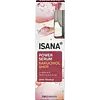What's inside
What's inside
 Key Ingredients
Key Ingredients

 Benefits
Benefits

 Concerns
Concerns

 Ingredients Side-by-side
Ingredients Side-by-side

Water
Skin ConditioningHydroxyethylcellulose
Emulsion StabilisingPhenoxyethanol
PreservativeCaprylyl/Capryl Glucoside
CleansingBakuchiol
AntimicrobialCocoyl Proline
Skin ConditioningEthylhexylglycerin
Skin ConditioningParfum
MaskingSodium Cocoyl Glutamate
CleansingHydroxypropyl Guar
Emulsion StabilisingCyclodextrin
AbsorbentPolyglyceryl-6 Oleate
EmulsifyingGlyceryl Caprylate
EmollientCitric Acid
BufferingTrisodium Ethylenediamine Disuccinate
Sodium Surfactin
CleansingRetinol
Skin ConditioningBenzyl Salicylate
PerfumingSodium Hydroxide
BufferingAlcohol
AntimicrobialTris(Tetramethylhydroxypiperidinol)Citrate
StabilisingCitronellol
PerfumingWater, Hydroxyethylcellulose, Phenoxyethanol, Caprylyl/Capryl Glucoside, Bakuchiol, Cocoyl Proline, Ethylhexylglycerin, Parfum, Sodium Cocoyl Glutamate, Hydroxypropyl Guar, Cyclodextrin, Polyglyceryl-6 Oleate, Glyceryl Caprylate, Citric Acid, Trisodium Ethylenediamine Disuccinate, Sodium Surfactin, Retinol, Benzyl Salicylate, Sodium Hydroxide, Alcohol, Tris(Tetramethylhydroxypiperidinol)Citrate, Citronellol
Ingredients Explained
These ingredients are found in both products.
Ingredients higher up in an ingredient list are typically present in a larger amount.
Ethylhexylglycerin (we can't pronounce this either) is commonly used as a preservative and skin softener. It is derived from glyceryl.
You might see Ethylhexylglycerin often paired with other preservatives such as phenoxyethanol. Ethylhexylglycerin has been found to increase the effectiveness of these other preservatives.
Hydroxyethylcellulose is used to improve the texture of products. It is created from a chemical reaction involving ethylene oxide and alkali-cellulose. Cellulose is a sugar found in plant cell walls and help give plants structure.
This ingredient helps stabilize products by preventing ingredients from separating. It can also help thicken the texture of a product.
This ingredient can also be found in pill medicines to help our bodies digest other ingredients.
Learn more about HydroxyethylcelluloseParfum is a catch-all term for an ingredient or more that is used to give a scent to products.
Also called "fragrance", this ingredient can be a blend of hundreds of chemicals or plant oils. This means every product with "fragrance" or "parfum" in the ingredients list is a different mixture.
For instance, Habanolide is a proprietary trade name for a specific aroma chemical. When used as a fragrance ingredient in cosmetics, most aroma chemicals fall under the broad labeling category of “FRAGRANCE” or “PARFUM” according to EU and US regulations.
The term 'parfum' or 'fragrance' is not regulated in many countries. In many cases, it is up to the brand to define this term.
For instance, many brands choose to label themselves as "fragrance-free" because they are not using synthetic fragrances. However, their products may still contain ingredients such as essential oils that are considered a fragrance by INCI standards.
One example is Calendula flower extract. Calendula is an essential oil that still imparts a scent or 'fragrance'.
Depending on the blend, the ingredients in the mixture can cause allergies and sensitivities on the skin. Some ingredients that are known EU allergens include linalool and citronellol.
Parfum can also be used to mask or cover an unpleasant scent.
The bottom line is: not all fragrances/parfum/ingredients are created equally. If you are worried about fragrances, we recommend taking a closer look at an ingredient. And of course, we always recommend speaking with a professional.
Learn more about ParfumPhenoxyethanol is a preservative that has germicide, antimicrobial, and aromatic properties. Studies show that phenoxyethanol can prevent microbial growth. By itself, it has a scent that is similar to that of a rose.
It's often used in formulations along with Caprylyl Glycol to preserve the shelf life of products.
Water. It's the most common cosmetic ingredient of all. You'll usually see it at the top of ingredient lists, meaning that it makes up the largest part of the product.
So why is it so popular? Water most often acts as a solvent - this means that it helps dissolve other ingredients into the formulation.
You'll also recognize water as that liquid we all need to stay alive. If you see this, drink a glass of water. Stay hydrated!
Learn more about Water